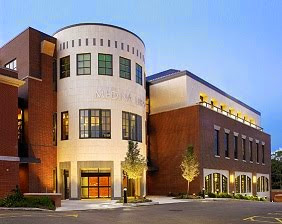For auld lang syne, my jo,
For auld lang syne,
We'll take a cup o' kindness yet,
For auld lang syne.
Every New Year's Celebration Eve ends with the singing of the old Scottish ballad.
But what do the words Auld Lang Syne mean and why do we sing it on New Years' Day? Indeed, why has the whole world adopted the song as its favorite farewell anthem?
 |
| Robert Burns, Scottish poet |
Auld Lang Syne can be translated as "old, long, since" but it is taken to mean "for the sake of old times." It is an old Scottish poem that Robert Burns set to music in 1788. Quickly adopted by the Scots, the song emigrated to the rest of the British Isles and from there to wherever in the world they traveled. Today, it is sung in east Asia and various European nations also. It is used at farewells, funerals (and other memorials of the dead), graduations, the end of a (non-New Year) party or a Boy Scout jamboree.
Besides remembering the past, the song is also about reuniting with old friends over a drink.
The power of the song was such, that Gen. Ulysses S. Grant restricted singing it during the Civil War because of its message of reconciliation and returning home. Once the surrender was signed, he ordered the band to play it.
And during the Christmas Truce of World War One, it was one of the three songs that the soldiers, both British and German, sang together.
 Hollywood did its part to popularize the song when it was used as early as 1925. Tears flowed when Shirley Temple sang it to a dying soldier in the John Ford movie Wee Willy Winkie. And who will forget how the whole town of Bedford Falls came together to save George Bailey from jail and they all burst into song, Auld Lang Syne, as the little Christmas tree bell tinkled and Clarence got his wings?
Hollywood did its part to popularize the song when it was used as early as 1925. Tears flowed when Shirley Temple sang it to a dying soldier in the John Ford movie Wee Willy Winkie. And who will forget how the whole town of Bedford Falls came together to save George Bailey from jail and they all burst into song, Auld Lang Syne, as the little Christmas tree bell tinkled and Clarence got his wings?It has been used in countless other movies.
 |
| Guy Lombardo, Big Band leader of the 30's & 40's |
Guy Lombardo is credited with further popularizing the song when his band used it as a segue between two radio programs during a live performance at the Roosevelt Hotel in New York in 1929. By coincidence, they played "Auld Lang Syne" just after the clock hit midnight, and a New Year's tradition was born.
LYRICS
Should old acquaintance be forgot,
and never brought to mind?
Should old acquaintance be forgot,
and old lang syne?
CHORUS:
For auld lang syne, my dear,
for auld lang syne,
we'll take a cup of kindness yet,
for auld lang syne.
And surely you’ll buy your pint cup!
and surely I’ll buy mine!
And we'll take a cup o’ kindness yet,
for auld lang syne.
CHORUS
We two have run about the slopes,
and picked the daisies fine;
But we’ve wandered many a weary foot,
since auld lang syne.
CHORUS
We two have paddled in the stream,
from morning sun till dine†;
But seas between us broad have roared
since auld lang syne.
CHORUS
And there’s a hand my trusty friend!
And give me a hand o’ thine!
And we’ll take a right good-will draught,
for auld lang syne.
CHORUS
I remember one New Year's Eve party when I was serving in the U.S. Air Force. I was stationed in Okinawa near the start of an 18 month tour of duty. Barring a family crisis, I would not see my family for over a year. The clock struck twelve, the band started up the music. Everyone cheered and whooped, while I struggled to not cry, thinking of my family back in Ohio...
What are your memories of Auld Lang Syne?
UPDATE ON FREE DNA TEST
Judy Russell and the Family Tree DNA company were offering a free DNA test to whomever Judy found most deserving. Click the link below to learn about the winner(s) and how the holiday spirit moved quite a few people to participate:
http://www.scotland.org/features/the-history-and-words-of-auld-lang-syne/
https://en.wikipedia.org/wiki/Auld_Lang_Syne
http://www.themorgan.org/collection/Auld-Lang-Syne
http://abcnews.go.com/blogs/headlines/2012/12/auld-lang-syne-what-does-it-mean-again/
http://www.bbc.com/news/uk-scotland-25402099
https://en.wikipedia.org/wiki/Auld_Lang_Syne#Lyrics



























